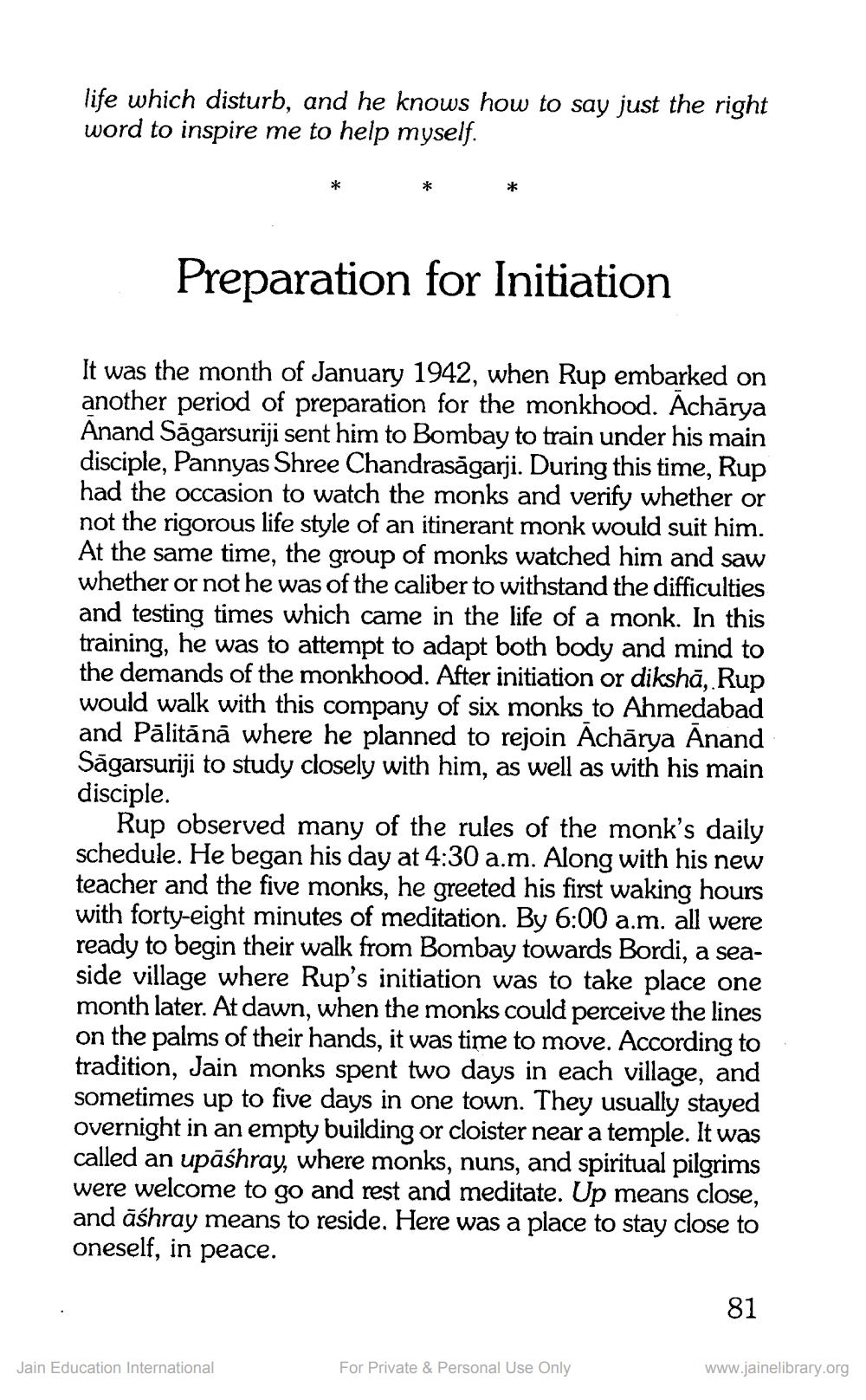________________
life which disturb, and he knows how to say just the right word to inspire me to help myself.
Preparation for Initiation
It was the month of January 1942, when Rup embarked on another period of preparation for the monkhood. Achārya Anand Sāgarsuriji sent him to Bombay to train under his main disciple, Pannyas Shree Chandrasāgarji. During this time, Rup had the occasion to watch the monks and verify whether or not the rigorous life style of an itinerant monk would suit him. At the same time, the group of monks watched him and saw whether or not he was of the caliber to withstand the difficulties and testing times which came in the life of a monk. In this training, he was to attempt to adapt both body and mind to the demands of the monkhood. After initiation or dikshā, Rup would walk with this company of six monks to Ahmedabad and Pālitānā where he planned to rejoin Achārya Anand Sāgarsuriji to study closely with him, as well as with his main disciple.
Rup observed many of the rules of the monk's daily schedule. He began his day at 4:30 a.m. Along with his new teacher and the five monks, he greeted his first waking hours with forty-eight minutes of meditation. By 6:00 a.m. all were ready to begin their walk from Bombay towards Bordi, a seaside village where Rup's initiation was to take place one month later. At dawn, when the monks could perceive the lines on the palms of their hands, it was time to move. According to tradition, Jain monks spent two days in each village, and sometimes up to five days in one town. They usually stayed overnight in an empty building or cloister near a temple. It was called an upāshray, where monks, nuns, and spiritual pilgrims were welcome to go and rest and meditate. Up means close, and ashray means to reside. Here was a place to stay close to oneself, in peace.
Jain Education International
For Private & Personal Use Only
www.jainelibrary.org




